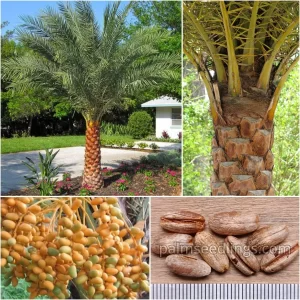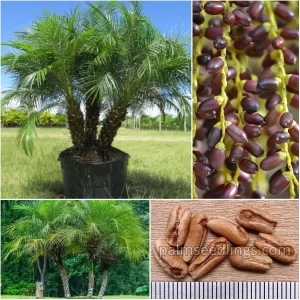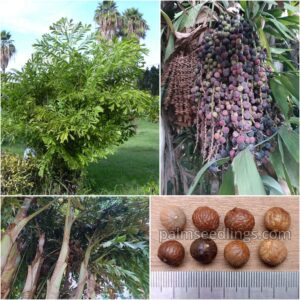Menu
Syagrus romanzoffiana, commonly known as the queen palm, is a tall, elegant palm that can grow up to 15–20 meters (50–65 feet) in height. It has a straight, smooth trunk topped with a lush crown of arching, feathery fronds that can reach 3–5 meters (10–16 feet) in length. The fronds are bright green with pinnate leaflets arranged neatly along the central rachis. The tree produces creamy-white flowers in large clusters, followed by small, orange, edible fruits.
Native to South America, particularly Brazil and Argentina, the queen palm thrives in well-drained soils and prefers full sun. It is moderately drought-tolerant and highly resistant to wind, making it suitable for coastal and urban areas. This palm can endure cold temperatures as low as -5°C (23°F) for short periods but may require protection in areas with frequent frost.
| Weight | N/A |
|---|---|
| Quantity | 10 Seeds, 100 Seeds, 1.000 Seeds |




All rights reserved PalmseedlingsⓇ 2025.